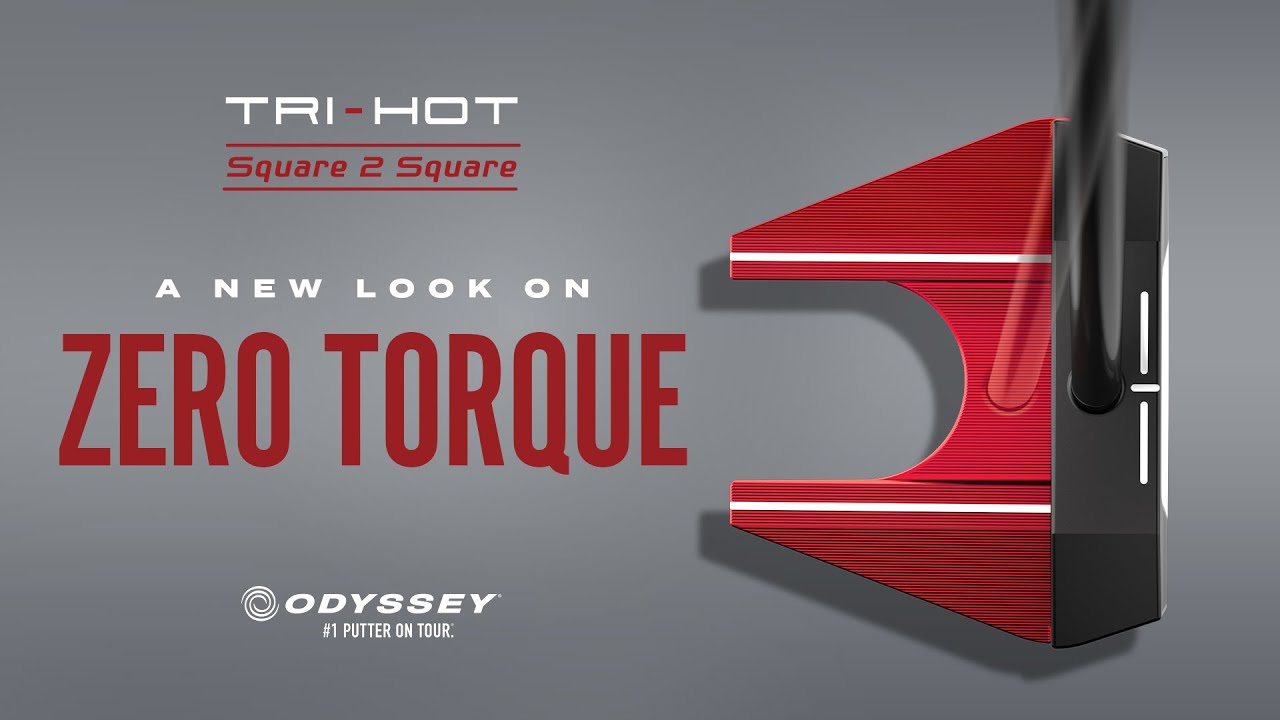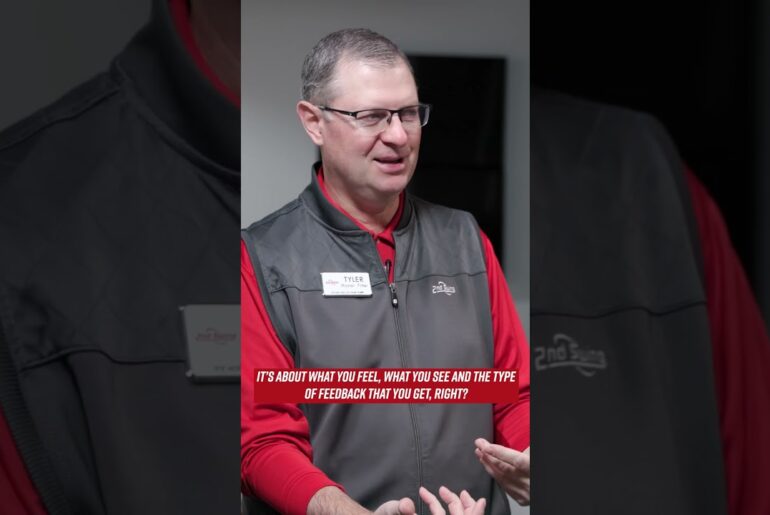🎥 Introducing the new Square 2 Square Tri-Hot – a revolution in Zero Torque putters.
We moved the shaft forward so it aims, and stays square without a forward press.
Zero Torque has taken over the putter world… but not every golfer could get comfortable with that new setup. Until now.
Our new Tri-Hot construction brings the CG forward, reducing shaft lean and onset, giving you true Zero Torque performance with a more traditional look. PLUS with the new Ai-Dual Insert, you get the same distance control of Ai-ONE.
To find our more, head to https://odysseyeu.callawaygolf.com/en/gb/golf-clubs/putters/
Stay Connected:
• Facebook: /OdysseyGolfEurope/
• Instagram: /odysseygolf_tour/
• X (Twitter): /OdysseyGolfTour
Subscribe for the latest from Odyssey Golf Europe.
#odyssey #No1putterontour
We have a new product out and I know how much time you guys have spent on this because when you see the break aparts and you you you’re going to go through all the reasons why we did this. There’s more tech in this putter than anything we’ve ever made. That’s right. And it also is addressing a trend in tour golf and in retail that is taking off right now with zero torque. Uh yeah. So this is square to square tryhot or S2S tryhot and like you said it’s zero torque. It’s been the hottest trend in golf over the past year or so. So if you look at the picture here I have on the iPad you can see where kind of this translucent shaft where it used to be on our old square to square putters. And in zero torque uh the center gravity depth and the shaft depth are the same. Mhm. So it was kind of deep in the putter. You can see it has a little bit of shaftling. In our case it was 2° of shaft. With these new S2S trihots it’s moved forward. So, it’s just a little bit more natural, a little more palatable and easy to look at. In terms of the construction, so you’ll recognize the TriHot name. This is something that we’ve gone to a few times, most recently in Trihot 5K in 2021, 222, 23. Did great. Fantastic putters, super high MOI. CG was a little bit further forward. I like to talk about these a little different. So, back then we were kind of 80% in on MOI, 20% in on CG. In this case, we flipped it. We’re about 80% in on CG depth and 20% in on MOI. So, we really want to prioritize pushing that CG as far forward as possible without giving up too much uh of the MOI that these bigger mallets have. So, if you look at this, you’ve kind of commented on this earlier when we were talking about it. If you put this in your hands and you hold it, you can feel that. It’s funny because you just you don’t it takes nothing for it to go face down. Yeah. And I the first time I picked one of these up in Pro Tour build, Phil Felo had one back and uh I picked it up and it literally almost dropped it. Yeah. Almost like flipped out of my hand and I’m like, “Holy cow.” Like, “Yeah, you’re right.” Like this is this weight is way forward of traditional putters. That’s right. And I’ve actually seen several people drop it, pick it up for the first time, which is fun. I’ve done it myself. Um, but kind of what goes into that, you can see there are a lot of different colors, a lot of different parts in there. I’ll look at the number seven broken apart that we have here. So, the red, that anodized red in the back looks really, really nice. That’s aluminum. So, that’s a lighter material than the steel bodies that we normally go with. A couple really good things about aluminum. Number one, like you see in the red here, it anodizes really nicely. It looks premium. We know it’s going to sound and feel good. Number two, it’s about half the density of steel. So, we’re able to take that weight out and use a bunch of it to move forward. Number three, it’s easy to machine. You look at the sole here, you can see we have a lot of machined out pockets and areas, even underneath the sole plate. We’re trying to get every gram out of this that we can then move forward. So, at that point, we had 140ish grams that we could play with. And what did we do with that? Well, we went and we put it into tungsten. Uh, so this is kind of the main driver right here. This is tungsten and this is what we did with all the weight that we took from the back, moved it forward. On average in these three models we have, so we have seven jailbird Rossi on average about 140 g of tungsten that we’ve put in the face. So this goes under a steel chassis in here bonded into there. And then we have our new AI dual insert, which we’ll talk a little bit that goes in here. All right. So this is our new AI dual insert. You can see it’s two different layers here. So we have this white layer. This is, for lack of a better term, we’ll call it the cover. The red layer here, we’ll call it the core. They’re two different urethane. So, try bending that one. You can feel it’s a little bit easier to bend. It’s a softer material. This back one here, the core is a firmer material. Yeah. You know, pulling from what we learned in AI1, developing AI Duel. It’s kind of the best of both worlds, too. We’re really excited about it. So for a golfer at home, why that’s so important that you can get forward roll off high off the face, low off the face, you know, forward roll off the middle. We all try to hit in the middle, but like for a regular golfer that plays recreationally, they play all kinds of different golf courses. They’ll play slow greens, they’ll play fast greens. When that ball starts to sit at different heights on the green, so you get on a slow green, that ball’s sitting in a deeper depression. When you get on really firm and hard fast greens, it sits higher up on the face. Most average golfers strokes kind of are the same. They are what they are and they kind of deliver the club. Well, what it creates is is a a vertical height difference in where they hit it on the face. But now we have an insert that isn’t just good off the middle in terms of forward roll. Yeah. Low on the face is producing forward roll. High off the face is producing a lot of forward roll. So, I just think it’s killer because you have people at home that are going to invest in in a lot of technology in this putter, but they’re going to go play all these different golf courses and they’re going to see over time like their their distance control is going to improve. Their lines are going to be tighter because if you get the ball rolling with top spin and it’s not spending any time bouncing around, the imperfections on a green are not going to affect your speed or, you know, how the putt’s wanting to break. Yeah. Um, it’s a home run. But the most important thing, and you you crushed it on this, is consistent top spin. And up and down the face, we’ve we’ve tightened that top spin, that standard deviation, or improved the consistency of it. That’s going to help a lot on breaking putts, too. You know, it doesn’t take much of a change in your skid distance for that putt to break a little bit differently than the way you thought or envisioned. And so, having a tighter uh skid distance or more control over that tighter top spin consistency is really, really helpful, even if it’s not always super perceivable. Eric Stuben guys spent a lot of time here uh designing one of the most advanced putters we’ve ever created at Odyssey. We have the new AI dual insert and I can promise you that every single player out there is going to benefit from this new insert. Thank you for the time cuz as we know any time with Eric is time well spent. So I I appreciate it and thank you for breaking this thing down and uh let’s go make some putts. Let’s do it. See you on the course.








3 Comments
Steel or Graphite shaft?
Zero torque heel shaft coming?
1) What’s the point of the aluminum “fork” piece? It’s so light that it contributes next to nothing to MOI.
2) Everything they said about the urethane face is nonsense. No matter whether the ball is sitting a millimeter or two lower in the putting surface on a slow green or sitting a skosh higher on a firm green, the contact point between the ball and the putter face will be the same. The friction characteristics of the ball and club face and the delivered face angle are the most important factors in initiating forward roll.
3) Did they say “topspin”? 😂 A putted ball doesn’t “spin”. It rolls or skids, that’s it, and skid has more to do with distance control than it does with direction. I wrote a couple of columns on this subject at Will o'the Glen on Golf:
https://willotheglenongolf.blogspot.com/2022/08/debunking-myth-of-spin-in-putting.html
https://willotheglenongolf.blogspot.com/2022/08/why-your-putts-skid-and-what-you-can-do.html
When you watch these manufacturer’s videos on their latest new equipment, remember that they are trying to sell you something. These putters cost what a high-end driver used to cost – and more. I don’t know would be worse: these guys believing the nonsense they are spouting, or them knowing it’s bulls**t and still putting it out there to sell $600 putters.